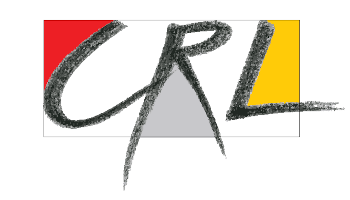
ENEN2plus 14C workshop
Five days workshop on radioactive 14C for master students. Hands-on training for sample preparation, AMS measurement, and data processing. With your own materials. Prague and Řež near Prague, Czech Republic, 15-19 July 2024.
Students of University master program submit a research proposal by email. The most interesting and manageable proposals will be selected. Their authors will be invited for a workshop and provided with detailed information on sample collection and shipping, travel financial support, etc.
Travel support for cross-border workshop participants from ENEN2plus project (max 500 EUR for travel, 500 EUR for accommodation).
Timeline
| Deadline | |
| Proposal submission | 10 March 2024 (extended from 11 Feb) |
| Decision announced | 15 March 2024 |
| Samples at NPI laboratory | 31 May 2024 |
| Workshop | 15-19 July 2024 |
Proposal details
Writing scientific proposals is a critical step for most research projects. Clean and logical text should allow reviewers to rank proposals and select the best candidates for support. Usually, proposals are required to fit within certain page limits.
Proposal for workshop requirements
- Author name
- Author school/university name and program (link to university webpage)
- Ideas why the samples are to be analyzed (research goals), allowed 3 samples for each proposal
- Ideas how the results will be used, research goals
- Description of samples (up to 3 samples for proposal) and how they will be obtained
- Maximum two A4 pages of text (tables and pictures included)
Workshop tentative program
- Production of 14C, carbon cycle, detection techniques, application of 14C measurements
- Samples preparation in laboratory (hands-on)
- Operation of accelerator mass spectrometer (hands-on)
- Data evaluation and drafting conclusions (hands-on)
- Excursion (options discussed with participants prior workshop)
Background on 14C
Carbon is essential to life. In nature, it exists in many different inorganic and organic forms. Carbon occurs as a mixture of two stable isotopes (12C and 13C) and one radioactive isotope (14C) with a half-life of 5730 years. The isotopes differ by mass, however, they are very similar chemically. The radioactive 14C atoms are constantly generated by interaction of nitrogen atoms in the atmosphere with secondary neutrons produced by cosmic rays. A large quantity of 14C was produced in the atmosphere by above-ground nuclear tests in the mid-20th century. Some 14C has been released from nuclear power plants and reprocessing of spent nuclear fuel. Contrary to that, burning of fossil fuels reduces 14C concentration in the atmosphere. Released carbon dioxide is free from 14C as the fossil fuels are too old to contain this radioisotope.
Radioactive 14C atoms emit low energy beta particles due to radioactive decay. For measurement of low 14C concentration, low-level beta counters have been used. The most sensitive method is accelerator mass spectrometry (AMS). The technique effectively filters atoms by mass and energy and register the ratio of rare and stable isotopes. For 14C measurements in natural samples, the ratio is in the range of 10-12 and 10-15. The technical development in nuclear physics allowed production of compact AMS facilities with lower acceleration potentials. Such facility will be available for the workshop.
The quantity of 14C in the material is used for radiocarbon dating, wildlife crime control, forensic analysis of works of art, differentiation between fossil and biofuels, monitoring of nuclear power plant releases, to list just a few examples.

AMS system at Nuclear Physics Institute, Czech Republic
Contact, Organizers
Workshop email: 14Cworkshop@ujf.cas.cz
Jan Kameník, Kateřina Pachnerová Brabcová, Ivo Světlík
Nuclear Physics Institute, Czech Academy of Sciences
Czech Republic
 |
 |


